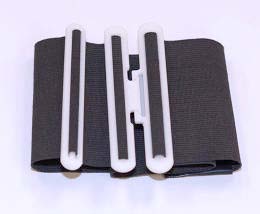Made in Space and NASA have brought 3D printing to Outer Space, to create all the little things they left behind.
Could you live in space? As space exploration and research is becoming commercialized, new companies are being built around answering the question of what it would take to live in space. According to Mike Chen, co-founder and chief strategy officer of startup Made in Space, it’s going to take 3D printers. The first 3D printer in space was sent to the International Space Station via the Space X Dragon capsule on November 17, and after installation and calibration, astronauts created their first part on November 25.

What did they print? In the best tradition of 3D printing, it printed a part for itself: a faceplate for the printer bearing the company’s logo. Printing logos might not seem all that useful, but the company has proven that the technology works. In the past astronauts have had to improvise repairs using whatever items they had in hand. In his talk at Autodesk University, Chen showed pictures of tools being created out of the astronauts’ toothbrushes as an example of what astronauts have had to do in the past. Now, with a 3D printer, it will be possible for the earthbound team to send up designs for spare parts or even create a part for emergency repairs.
Astronauts for upcoming trips could well be trained in the use of 3D design tools in order to create the things they might need in space. People on earth can invent new objects for use in space. Amar Hanspal notes that if you know how to use tools like, oh say, Autodesk’s Fusion 360, “you will be the ones who define what we can do in space.”
Autodesk is working with medical researcher, flight surgeon, and astronaut Yvonne Cagle to create tools that can help astronauts keep fit for prolonged periods in space. The problem is that it’s not easy to get exercise in space, and in addition, the effects of anti-gravity on the body have an adverse impact on the muscles. Astronauts experience muscle-wasting in space even with exercise. Researchers have found that it’s possible to increase the effect of exercise by compressing the target muscles. As it turns out, space stations are equipped with yards and yards of stretchy material because it’s useful for a wide range of repairs. Now, it will also be used to create compression bands for exercise. Cagle has created a simple bracket that can be customized for astronauts and muscle groups and printed in space as needed.
The approach of combining compression with strength training is also helpful for earthbound people as well, and researchers are using it for people who may have mobility problems and aren’t getting as much exercise as they need. But Cagle has found that the approach helps everyone, and to demonstrate, she showed off her own impressive guns on stage at AU 2014, inspiring at least one deskbound writer to consider looking into this technology a little more.






